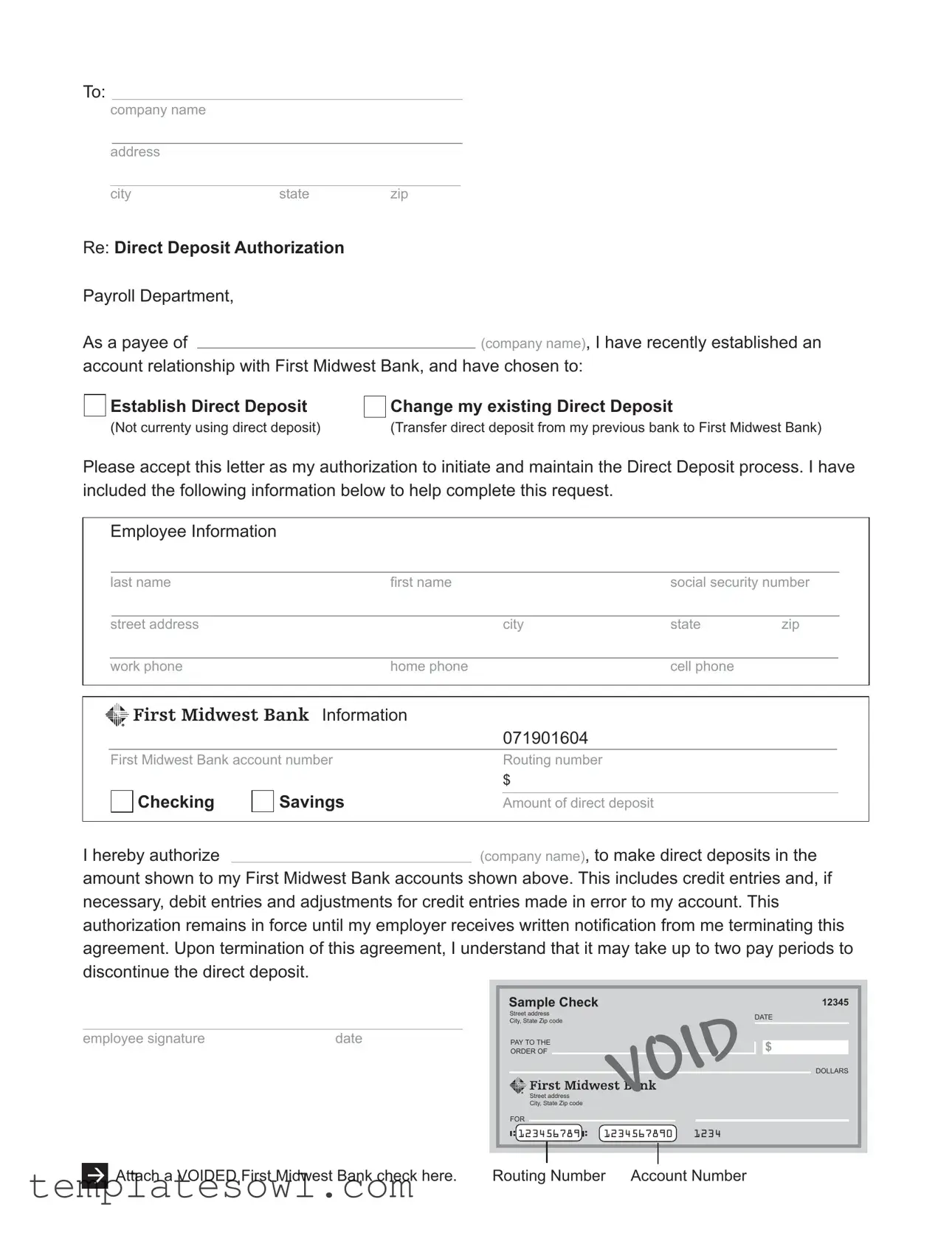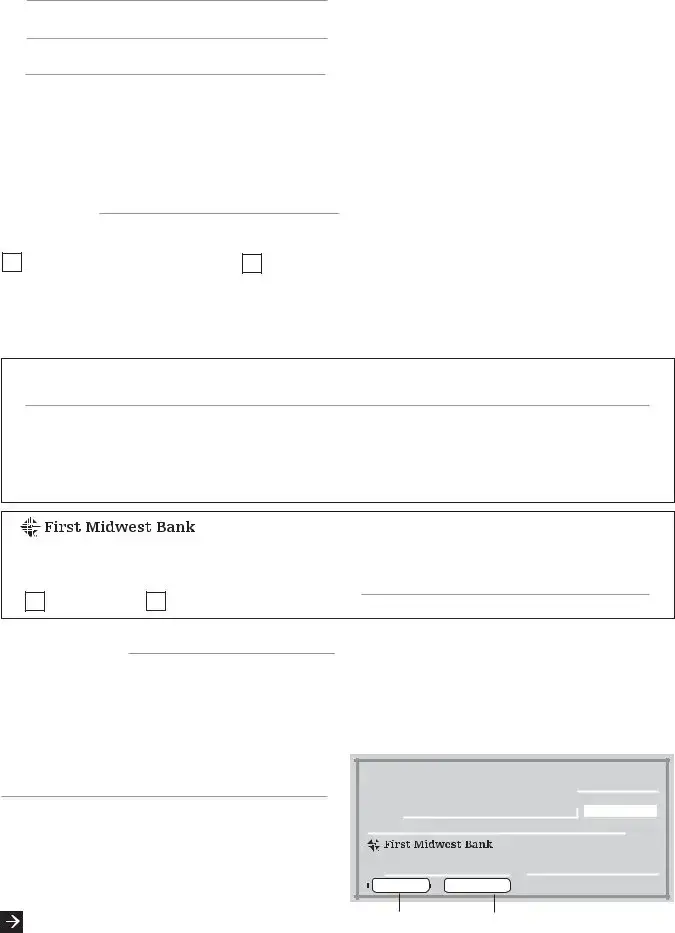What is the purpose of the First Midwest Bank Direct Deposit form?
The First Midwest Bank Direct Deposit form allows you to authorize your employer to deposit your paycheck directly into your First Midwest Bank account. This process makes receiving your pay more convenient and secure, eliminating the need for paper checks.
How do I fill out the Direct Deposit form?
To complete the form, provide your employer's name and address at the top. Next, state whether you are establishing a new direct deposit or changing an existing one. Fill in your personal information, including your name, social security number, address, and phone numbers. Then, indicate your First Midwest Bank account number, routing number, and the desired deposit amount. Don't forget to sign and date the form before submission.
Do I need to include any documents with the form?
When submitting the Direct Deposit form, you must attach a voided check from your First Midwest Bank account. This voided check helps your employer verify your account details and ensures correct processing of transactions.
Are there fees associated with setting up Direct Deposit?
No, First Midwest Bank does not charge fees for setting up direct deposit. This service is provided to make banking more efficient for customers. However, it's good to confirm with your employer if there are any fees associated with their payroll processing.
How long does it take for Direct Deposit to start?
Once your employer receives the completed Direct Deposit form, it typically takes one to two pay cycles for the changes to take effect. Check with your employer for specific timelines, as they may vary depending on their payroll schedule.
What if I want to cancel my Direct Deposit?
If you wish to terminate your Direct Deposit, you must provide written notification to your employer. Once your request is received, it may take up to two pay periods to discontinue the direct deposit. Make sure to allow for this timeframe to prevent any interruption in your payments.

